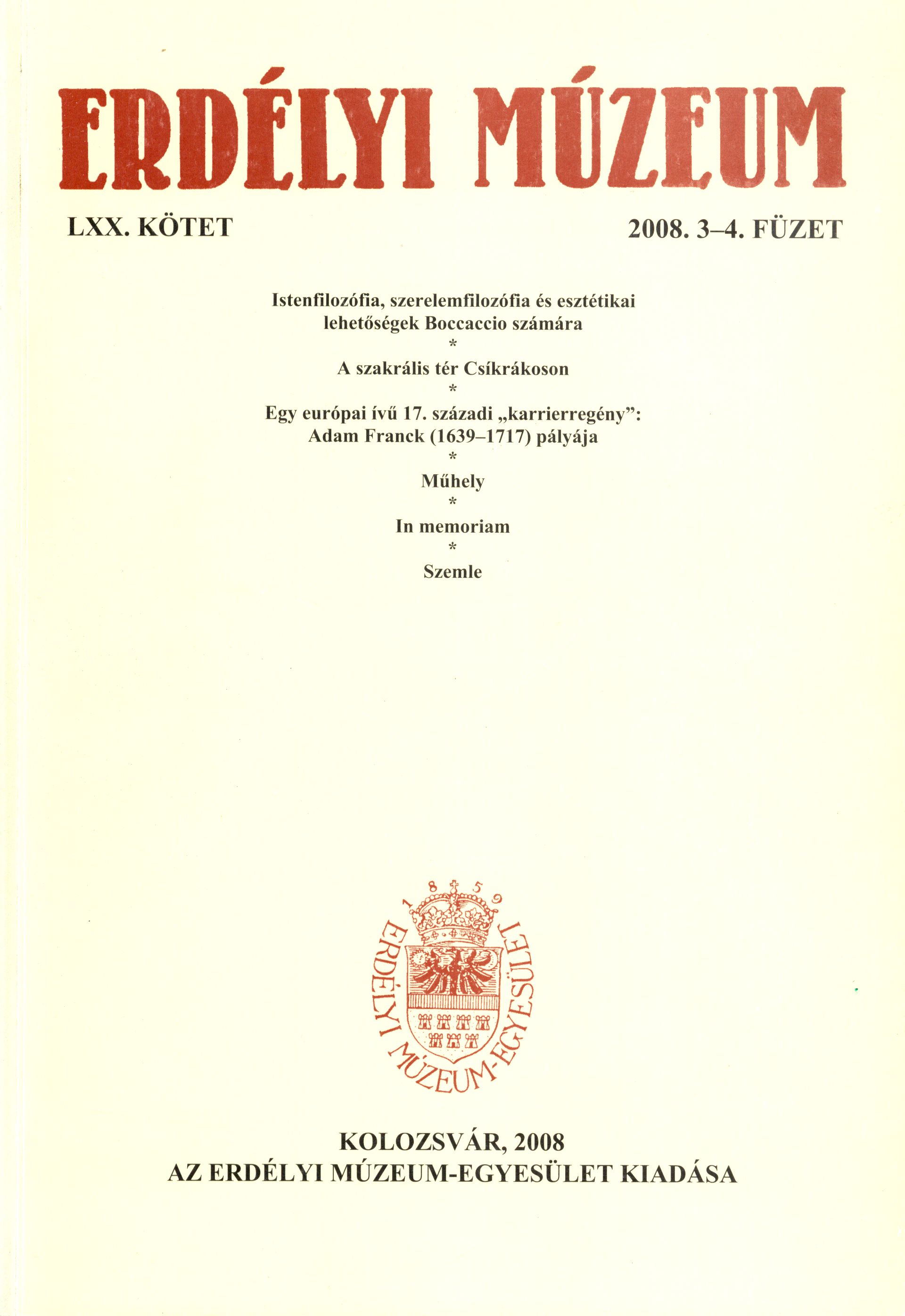A szakrális tér Csíkrákoson
The Change of the Sacral Configuration of a Village from Felcsík (Csíkrákos)
Author(s): Krisztina CsászárSubject(s): Anthropology, Customs / Folklore, Culture and social structure
Published by: Erdélyi Múzeum-Egyesület
Keywords: Csíkrákos; sacral architecture; sacral space network
Summary/Abstract: In my essay, I have undertaken to reveal and to describe the sacral configuration of Csíkrákos, a settlement on the Land of the Szeklers. I have kept in view the fact that this space imbued with sanctity is not only a network of inanimate objects, but it is a changing, living reality, which joins in itself the divine and the human. According to my assumption the region is formed and shaped by the people, who live there, and by the transcendental reality. My aim is to offer a whole image of the sacral space network of the village, of its changing in time, revealing also the reason of the changing. From the point of view of the methodology I followed the idea, that says that one of the aspects of the human being is striving for communication, but at the same time because of the limited character of the language not everything can be explained by means of words, language. My fundamental written sources: História (History) (1661-1711) written by the historian Mihály Cserei, the period included by Domus Historia 1698-1987, which is at the parish. The manuscript contains the notes of the parsons that served at Csíkrákos. The line of the written sources is closed by the work written by the teacher László Császár – who was born and taught in the village –, with the title Csíkrákos monográfiája (The Monograph of Csíkrákos). During my work I also relied on the local traditions, legends, and life stories. I have applied the diachronic and synchronic methods for the same region, this way there have become visible the modifications of the limits of the saint region, as well as sometimes the sacral centres are indicated at different points of the region. The human community that settles down in the region, as the first act of the settlement, establish the sacral centre of the region, in case of Csíkrákos we can also observe that the community takes possession again and again of the same region, rearranging by this the region used by the ancestors. Inside the same region the saint and the profane are present at the same time. In the essay I have followed with attention the relation of the saint region and profane time, as well as the profane region and the time impregnated with the saint. At Csíkrákos there also appeared the sacralised objects of the identity building, and following the change of the places of the sacral centres I have also followed the problem of desacralization.
Journal: Erdélyi Múzeum
- Issue Year: LXX/2008
- Issue No: 3-4
- Page Range: 16-36
- Page Count: 21
- Language: Hungarian

